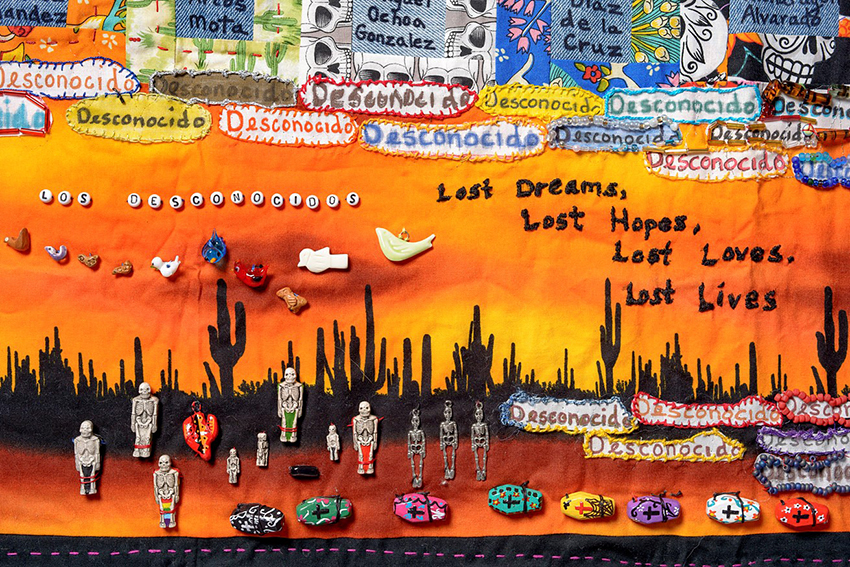Migrant Quilt Project tells stories of lost lives

Each stitch, each scrap of material in the quilts of the Migrant Quilt Project memorializes the lives of migrants who have died in the southern Arizona desert in search of a better life. Though the issue of immigration is hotly debated, the quilts are designed to tell the story of human lives lost in the Tucson Sector, the border region between Mexico and Yuma, Arizona.
Sixteen of the quilts will be on display Nov. 13 through Dec. 7 in two locations within Bowling Green State University’s Jerome Library. The Ray and Pat Browne Popular Culture Library on the fourth floor and the Center for Archival Collections on the fifth floor will host the exhibition, with open hours from 9 a.m. to 5 p.m. Monday through Friday.
According to the project’s website, it is a grass-roots, collaborative effort of artists, quilt makers and activists to express compassion for the migrants from Mexico and Central who died in the desert.
Jody Ipsen, one of the founders, was moved to action when she learned a record number of migrants died in the Tucson Sector between 2004 and 2005. Materials used in the quilts were collected at migrant layup sites in the Sonoran Desert. She reached out to quilt makers and artists to create quilts using the jeans, bandanas, work shirts and embroidered cloths.
Each migrant quilt lists the deaths for a specific federal fiscal year, coinciding with the U.S. government’s record-keeping. The name of each individual who died that year is inscribed in the quilt.
“The Migrant Quilts carry the stories of those who died so that viewers of the quilts may understand the real, personal, and fatal results of inhumane policies, including NAFTA, CAFTA, Operation Gatekeeper, Safeguard, and Hold the Line,” according to the website.
The goal of sharing the quilts in exhibitions across the country is to inspire people “to consider the conditions under which our fellow human beings take the ultimate risk to find more secure lives for themselves and their families.”
Ipsen and Peggy Hazard, curator of the exhibition, will present talks about the quilt project on Nov. 13 and 14. On Nov. 13, they will present the final session of the Immigrant Ohio symposium at 4 p.m. in 228 Bowen-Thompson Student Union. Ipsen will present “Dispatches from the Desert and The Immigration Equation.” Hazard will present “Migrant Quilt Project History and Practice.”
On Nov. 14, they will present “Criminalizing Migration in the Tucson Sector” and “What the Eye Doesn’t See Doesn’t Move the Heart: Migrant Quilts of the Arizona Borderlands” starting at 2:30 p.m. in the Pallister Conference Room on the first floor of Jerome Library.
Guests with disabilities are requested to indicate if they need special services, assistance or appropriate modifications to fully participate in this event by contacting Accessibility Services at access@bgsu.edu or 419-372-8495 prior to the event.
Updated: 11/07/2018 01:37PM
